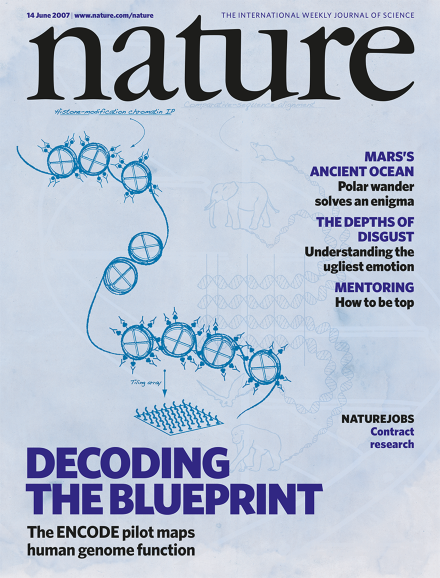Volume 447 Issue 7146, 14 June 2007
Editorial
Research Highlights
News
News in Brief
Correction
Business
News Feature
Correspondence
Books & Arts
News & Views
Correction
News & Views
Feature
-
Nature's guide for mentors
Career Guide:

